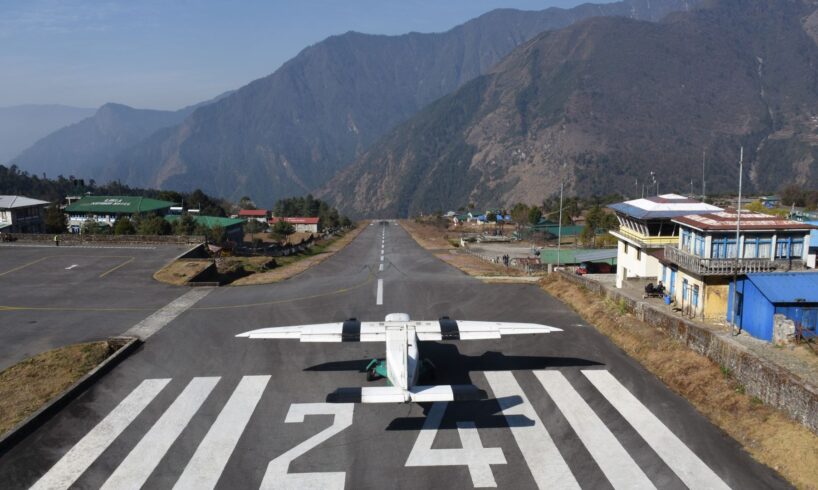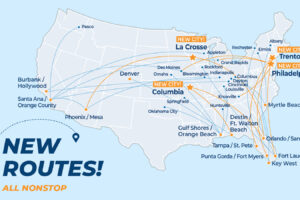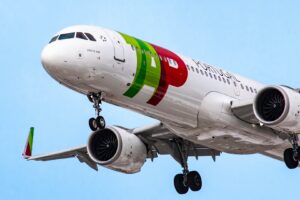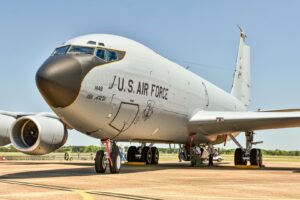
If you ask pilots what the hardest airport in the world to land at is, chances are you’ll get a different answer. In part, this is because it’s practically impossible to visit every airport in the world in one lifetime, but also because pilots have different preferences. What is difficult for one aviator might not be the case for another, and flying different aircraft types might impact how difficult or easy it is to land at a particular airport.
However, certain factors do contribute to an approach or landing being difficult. Factors such as a short or unusual runway, a complicated approach, ground obstructions, and more. As such, while it does depend on pilot preference, some airports are generally considered challenging due to a wide variety of reasons. In this guide, we will explore some of the world’s most challenging airports in no particular order and see why they’re difficult.
Large International Airports In Congested Airspaces
Credit: Shutterstock
This isn’t a single airport, but large international hubs, such as Dubai International Airport, receive huge amounts of traffic arriving and departing at almost all times of the day. The high volume of flights means that pilots (and controllers) must be extra vigilant about avoiding other aircraft. This is not as huge a concern at airports like Denver International Airport, for instance, which has few other large airfields in its vicinity and therefore lots of space to route flights.
Some cities, however, have numerous airports close to each other, which greatly increases complexity. New York is the best example of this in the United States, as it has JFK, LaGuardia, Newark, Teterboro, and several other busy airports all close to one another. Approaches to each airport have to be organized into narrow corridors with limited options for deviations, and the high traffic greatly increases workload for flight crews.
In New York, LaGuardia Airport stands out for its Park Visual approach to runway 31. This isn’t necessarily difficult in itself, but it’s different from your standard instrument approach. While some pilots enjoy the change, it does require extra vigilance as these types of approaches are not performed at many commercial airports. This is also true of approaches such as the Potomac River Visual at Washington-National, the Stadium Visual at Newark, or the visual approach to Runway 1R at San Francisco.
Aspen-Pitkin County Airport, Colorado
Credit: redlegsfan21 I Flickr
Aspen-Pitkin County Airport is one of several commercial airports in the Rocky Mountains, serving the small but popular ski town of Aspen. It is also the busiest regional ski town airport in North America. It primarily receives general aviation and private jet traffic, but Aspen also receives service from American Eagle, Delta Connection, and United Express. Part of the reason why it only receives regional jet service is due to the operational challenges associated with the airport.
Aspen-Pitkin County Airport is located 7,820 feet (2,384 meters) above sea level in a mountain valley. As such, aircraft have to land at Runway 15 and depart from Runway 33 due to the mountain range south of the airfield. Due to the steep approach and demanding go-around procedures, the FAA requires special training for flight crews. As of 2025, only SkyWest Airlines has crews certified to fly into Aspen, and as such, it operates all flights into Aspen on behalf of American, Delta, and United.
Airliners Certified To Serve Aspen
Bombardier CRJ-700
Embraer E175
Steep approaches and complicated go-around procedures can make an airport more challenging to operate into. London City Airport stands out as being an airport with a similarly steep approach, and pilots flying into London City Airport also have the added challenge of operating in a complex and high-traffic environment. Additionally, both airports have unique restrictions on which aircraft can fly in and out of them.
Cristiano Ronaldo International Airport
Credit: Shutterstock
Cristiano Ronaldo International Airport is the primary airfield serving Funchal, the capital of the Portuguese autonomous region of Madeira. The airport has a single runway, Runway 05/23, and Runway 23 offers a standard ILS approach with little challenge. However, the terrain beyond Runway 05 and around the airport means that a straight-in ILS approach into Runway 05 is impossible, so instead, pilots have to perform a visual approach.
This approach requires a 180-degree turn before lining up for an extremely short final approach. This is already a challenging and unique procedure to perform, but complicating this is the local weather. With the ocean on one side and high mountains on the other, Madeira Airport is often subjected to strong crosswinds, creating a challenging and high-workload environment for pilots. As such, pilots are required to undergo special training to fly into Madeira.
Madeira is frequently cited as one of the world’s most challenging airports to fly in and out of; however, these conditions also make the airport unique. Pilots who are familiar with the airfield often find the test of their skills enjoyable, and the approach into Madeira Airport is one of the most visually striking approaches in all of Europe. Madeira receives significant service from airlines across Europe and even receives summer seasonal flights from United Airlines to Newark.
Saint Barthelemy Airport In The Caribbean
Credit: Shutterstock
St Barts Airport (also known as Gustaf III Airport, Remy de Haenen Airport, or St. John Airport) is the primary airport serving the Caribbean island of Saint Barthelemy. The airport has a single runway (Runway 10/28) and no ILS approaches. The runway itself is only 2,119 feet (646 meters) long, meaning that there are severe limitations on which aircraft can operate in and out of St. Barts. The De Havilland DHC-7 is the largest aircraft that regularly services this airport.
The main challenge with St Barts is that the airport is located on the edge of a slope that ends on the beach. This prevented the installation of an ILS approach system, requiring pilots to perform visual approaches. This is not necessarily a bad thing, but it does require extra vigilance, especially because the steep approach into Runway 10 has aircraft flying a few dozen feet above a hill. As such, the margin for error is extremely low.
Airlines Serving St Barts
Air Antilles
St Barth Commuter
St Barth Executive
Tradewind Aviation
West Indies Helicopters
Winair
Pilots receive special training on how to operate in and out of St Barts Airport, and crews can use visual aids (namely, PAPI lights) to aid in their approach. As such, the airport is safe to fly in and out of. However, the terrain, short runway, steep approach, and lack of an ILS approach make it more challenging for pilots. This increases workload and requires extra vigilance, making it one of the most difficult airports to land at in the entire world.
Paro International Airport, Bhutan
Credit: Shutterstock
Paro International Airport is the sole international airport in Bhutan. Visually, this is one of the most distinctive approaches in the entire world. However, the airport’s location also makes this one of the most challenging airports to land at in the entire world. It’s located in a deep valley at an elevation of 7,332 feet (2,235 meters), and surrounding peaks can reach an altitude of over 18,000 feet (5,500 meters).
Flights can only occur during daylight hours in visual meteorological conditions due to the lack of an ILS approach system. The approach takes aircraft through a narrow valley, which then have to perform a steep turn to the short final approach. Pilots have to use visual checkpoints throughout the approach, with only a single VOR available for navigational assistance. Furthermore, the airport is prone to strong valley winds.
Drukair Fleet
Number
Bhutan Airlines Fleet
Number
Airbus A319-100
3
Airbus A319-100
2
Airbus A320neo
1
ATR42-600
1
Total
5
2
Only two airlines serve Paro (Drukair and Bhutan Airlines). Pilots are required to perform special training to be certified to land at Paro, and any adverse weather essentially shuts down the airport. Bhutan Airlines serves Paro with its fleet of two Airbus A319-100s, while Drukair flies three A319-100s, one A320neo, and a single ATR42-600. Additionally, Drukair has outstanding orders for three additional A320neo aircraft as well as two A321XLRs.
Tenzing-Hillary Airport, Nepal
Credit: Shutterstock
Tenzing-Hillary Airport (also known as Lukla Airport) was named in honor of Sherpa Tenzing Norgay and Sir Edmund Hillary, the first individuals to have reached the summit of Mount Everest. The airport is located near Mount Everest Base Camp and has service to Kathmandu as well as Ramechhap. Its located 9,337 feet (2,847 meters) above sea level, and it has a single runway that’s only 1,729 feet (527 meters) long.
The runway has a nearly 12% gradient, and it’s located directly in front of high terrain. A go-around is often not possible, meaning that pilots must commit to a landing. All approaches must be made to Runway 06, and all departures must use Runway 24. Pilots must complete special training and have significant experience in Short Takeoff/Landing (STOL) operations to be permitted to land here, and unpredictable weather often causes disruptions to operations.






